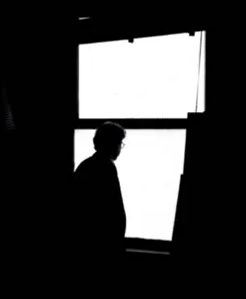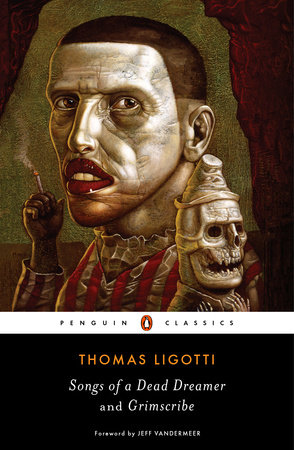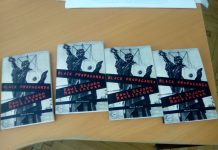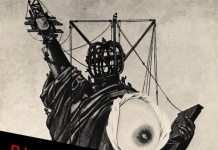 Today marks the winter solstice: shortest day and longest night of the year, the feast of darkness. Far more cultures have marked and venerated it historically than ever celebrated Christmas, and many of our Christmas customs (the Christmas tree, the Yule log, etc.) apparently derive from the pagan Germanic solstice festival of Yule. So, for the holidays, I’d like to share a suitably dark and timely tale: Thomas Ligotti’s “The Last Feast of Harlequin.”
Today marks the winter solstice: shortest day and longest night of the year, the feast of darkness. Far more cultures have marked and venerated it historically than ever celebrated Christmas, and many of our Christmas customs (the Christmas tree, the Yule log, etc.) apparently derive from the pagan Germanic solstice festival of Yule. So, for the holidays, I’d like to share a suitably dark and timely tale: Thomas Ligotti’s “The Last Feast of Harlequin.”
Thomas Ligotti, as most people now know thanks to the series True Detective and plagiarism accusations, is modern horror’s secret king, an enigmatic and reclusive figure whose stories have emerged from obscurity as some of the most influential and unsettling in contemporary dark fiction. He is also one of the few living writers to be honored with a Penguin Classics edition of his work in his own lifetime, one I reviewed recently in Strange Horizons. And that volume, containing his first two collections, includes “The Last Feast of Harlequin,” perhaps his first serious horror story.
The festival of the title kicks off on December 20th in an obscure Midwestern town, Mirocaw, but the real feast, the “festival within a festival,” takes place there on December 21st. Thither goes the narrator, a folkore academic researching “the significance of the clown figure in diverse cultural contexts,” drawn in part by the writings of his mysterious mentor, Dr. Raymond Thoss, author of a study entitled Winter Solstice: The Longest Night of a Society, notorious for going native during his fieldwork. And he gets to participate in the festival, and its secret inner feast of fools, and unearths its connection with the horrible myths of the Syrian Gnostics, and the hideous sacrifice associated with “the winter death of the earth.”
Ligotti himself has admitted that “The Last Feast of Harlequin” was “the first story I wrote that I thought was good enough not to throw away.” It is closest to his early emulation of H.P. Lovecraft – the unnamed academic narrator could double for Albert N. Wilmarth of Miskatonic University in Arkham in “The Whisperer in Darkness.” It has a dingy smalltown setting, the kind that reappear so often later in Ligotti’s work. And it makes extensive use of the characteristically Ligottian tropes of masks and clowns, “reminders of the forces of disorder in the world.” For all these reasons, I cited “The Last Feast of Harlequin” in my Strange Horizons review as the perfect introduction to Ligotti’s corpus. But also, simply, because it’s an elegantly written, sardonic, supremely finished tale that manages to outdo Lovecraft at his own game with an accomplished, disturbing classic of cosmic horror.
Oh, and it has one of the finest, nastiest crowning lines in contemporary horror, truly worthy of Poe: “What is it that buries itself before it is dead? The almighty serpent of wisdom—the Conqueror Worm.” Everybody, happy festival.


































